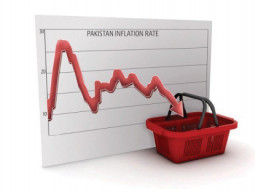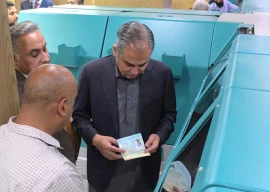
In late seventies, Robert S. McNamara, then World Bank president, argued, “Given the immense differences in the capital and technological base of the industrialised nations as compared with that of the developing countries, it [closing the gap] was simply not a feasible goal … for the developing nations to make it their primary objective is simply a prescription for needless frustration.”
International income apartheid was thus declared an inescapable reality and poverty alleviation emerged as the consolation prize for the developing countries.
This theme of focusing on poverty led to ritualism and hypocrisy in defining development objectives. Most of the developing countries were ruled by elite who wanted to get closer to their counterparts in the developed countries. They had little genuine interest in the poor.
Poverty line was defined at a very low level and pro-poor strategy was defined as any growth that reduces poverty ratio. By these distorted criteria, the elite could pretend to be working for the poor and keep the international development community happy. However, in substance, development programmes became schizophrenic — the declared focus on poverty alleviation versus the real interest of the elite in catching up with the developed countries. Growth rates were generally poor and progress in poverty alleviation modest. In most developing countries, income distribution changed in favour of the rich which meant that growth was actually anti-poor.
An alternative we propose is that developing countries should aim at ending the income apartheid and catching up with the developed countries within the 21st century. If they succeed in catching up in income levels, absolute poverty elimination will be a byproduct. In this strategy, the elite will be working in line with their true intentions and will be able to perform better. In fact, both the pace of growth and poverty alleviation will be accelerated.
This alternative theme is supported by these arguments — the logic of factor-price equalisation theorem and the development experience of China over the last 30 years and of developing countries in general.
The basic logic of convergence is provided by the factor price equalisation theorem Simply, the theorem says that when the prices of the output goods are equalised between countries as they move towards free trade, then the prices of the factors (capital and labour) will also be equalised. The working of this theorem is of course subject to a large number of conditions. However, more of these conditions are being met and scope of income convergence has increased because of the current tradability of services due to the ICT revolution.
The empirical validity of this is what China has done in the last 30 years and is set to do in the next 40. China achieved GDP growth of about 10% per year and is now the world’s largest exporter and manufacturer. Income distribution changed in favour of the non-poor and thus, growth strategy was not pro-poor. Yet, over 500 million people were lifted out of poverty. By 2050, China will in all probability catch up with the developed countries in per capita incomes and would have largely eliminated absolute poverty.
In the first decade of the 21st century, the convergence process seems to have started with real earnest for most developing countries. During the first 10 years of the 21st century, per capita income of developing countries has been growing at about 4.7% per year, 3.8% points more than that of the developed countries. Relative income gap of developing countries, which was 10.8% in 2000, was 15.1% in 2009 with the gap closing at the rate of 3.8% per year. If this differential rate persists, the income gap will be closed in 51 years. However, the world economic environment has changed.
The developed countries can no longer work as locomotives for developing country exports and there are not enough natural resources and carbon space for developing countries to replicate the lifestyle of their developed counterparts. Our research on India shows that for catching up, it will have to design its own road. Growth will be led by the service sector rather than manufacturing and it will a low-carbon economy in consumption and production. Good news is that the low carbon lifestyle would be healthier for human beings.
In the context of this theme of Great Convergence through low carbon growth, other South Asian countries – Bangladesh, Pakistan Sri Lanka and Nepal – should also design their own programs and policies by which they can catch up with the developed countries during this century. The dream of a world without poverty should be replaced by a world with prosperity for all. By that strategy, we will remove poverty faster and also fulfill the dreams of the emerging youth in our countries.
The writer is a Distinguished Fellow at Research and Information System for Developing Countries (RIS) in New Delhi
Published in The Express Tribune, March 10th, 2014.
Like Business on Facebook, follow @TribuneBiz on Twitter to stay informed and join in the conversation.


















COMMENTS
Comments are moderated and generally will be posted if they are on-topic and not abusive.
For more information, please see our Comments FAQ